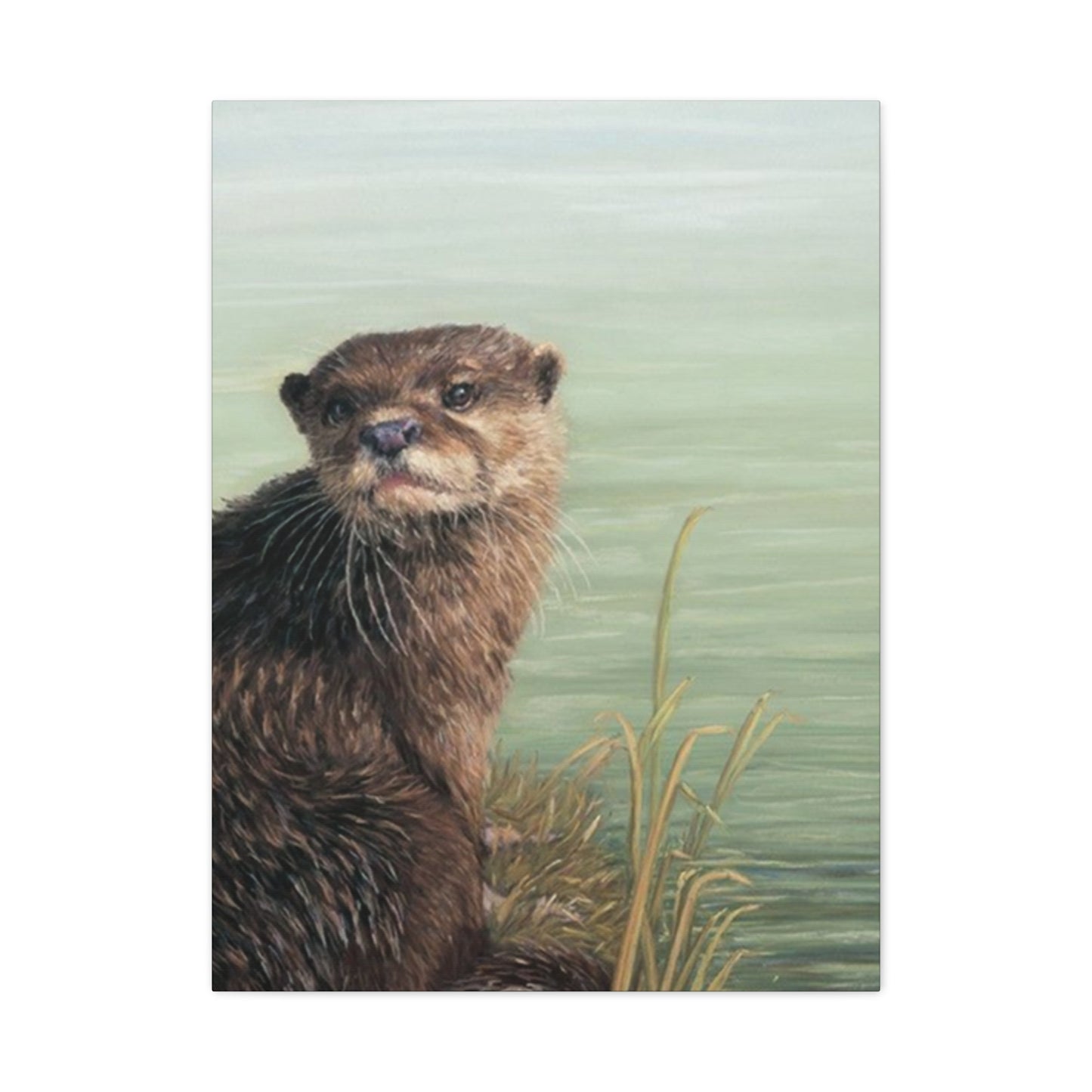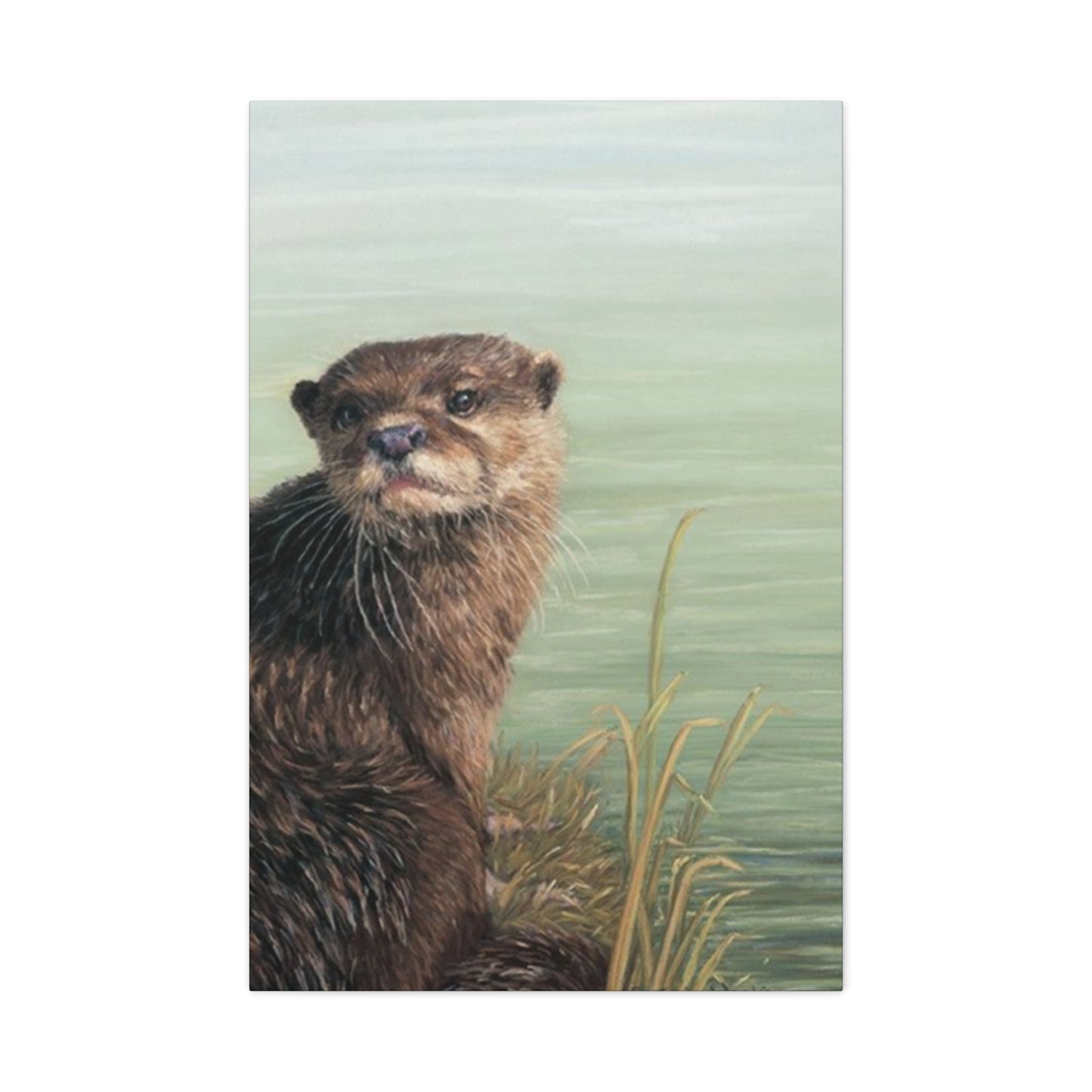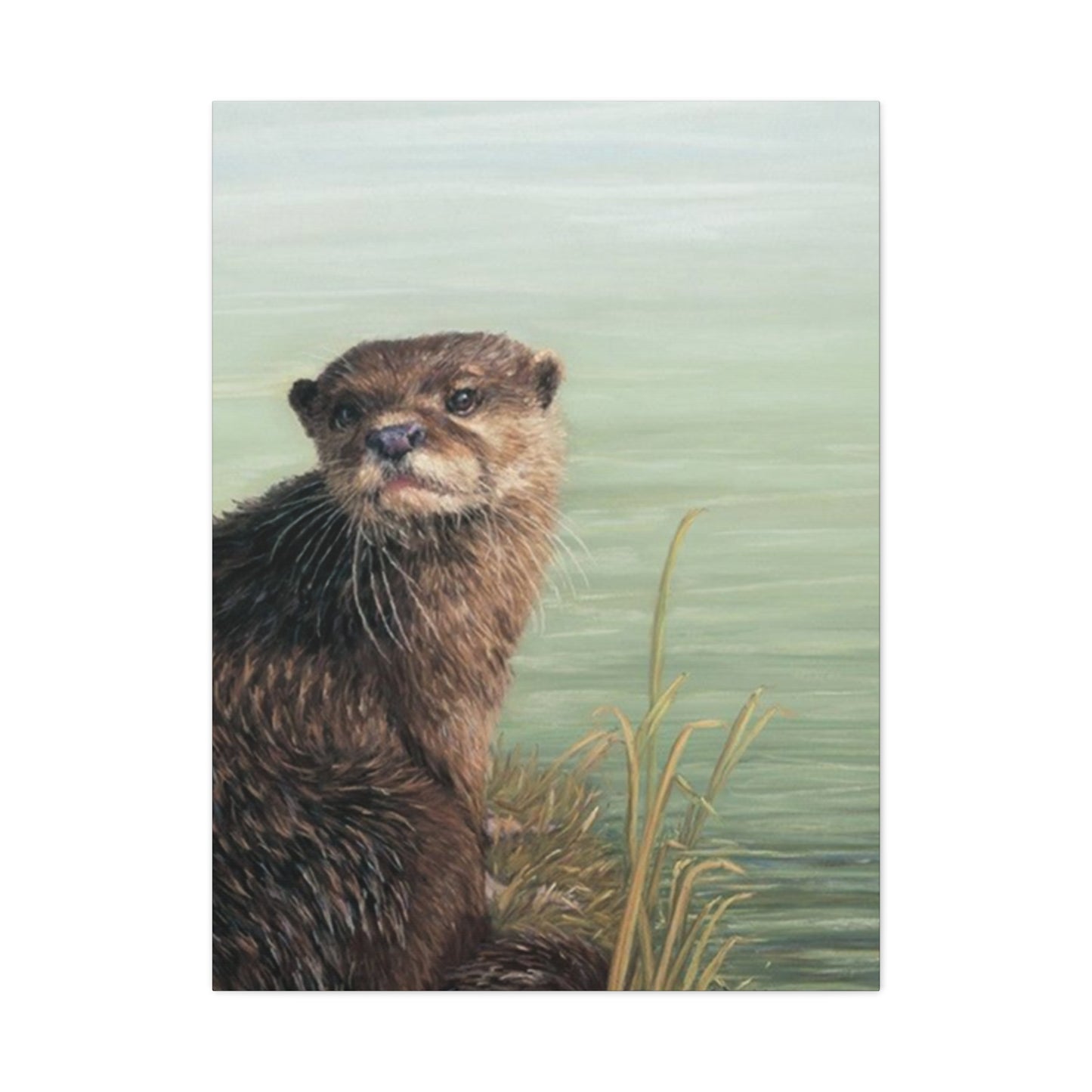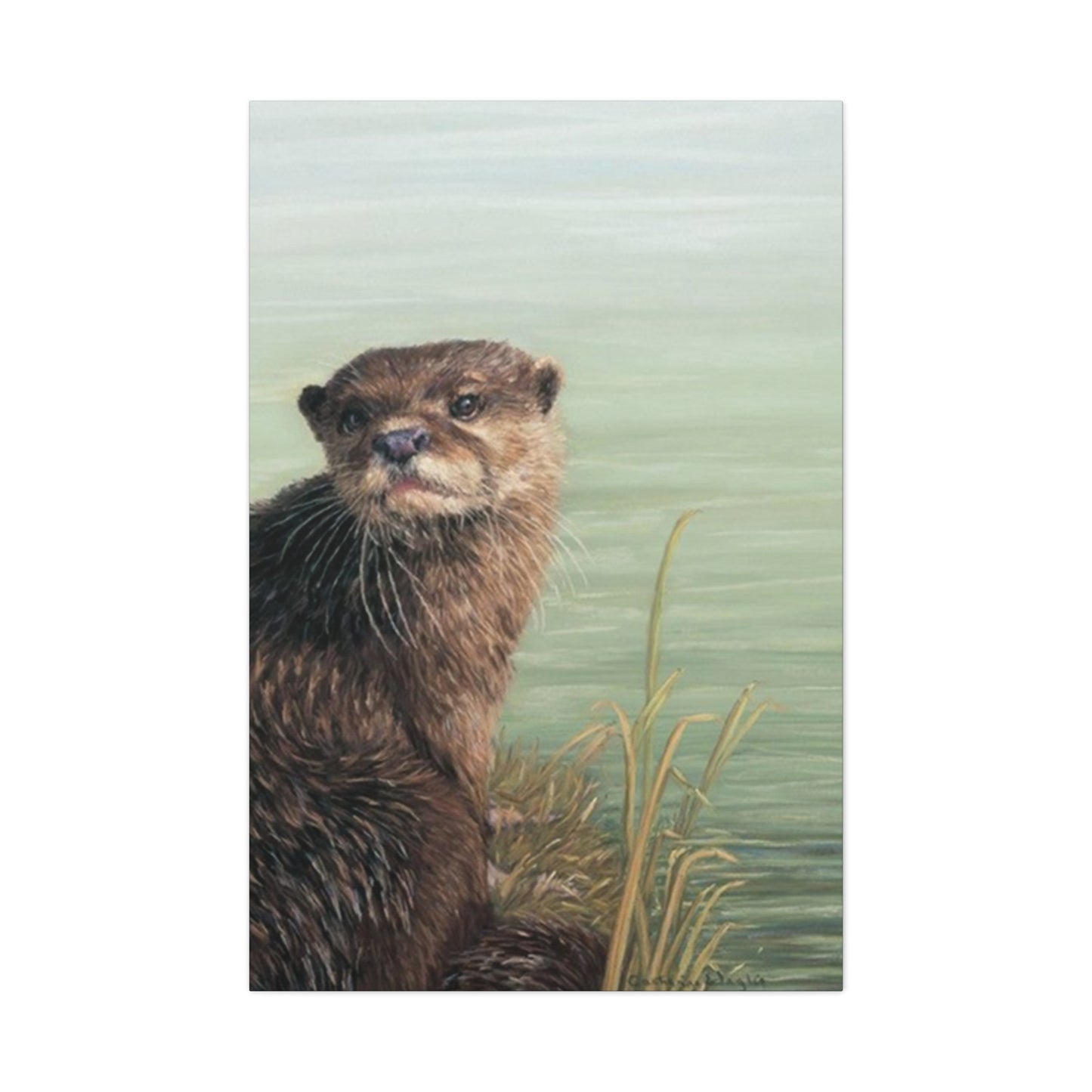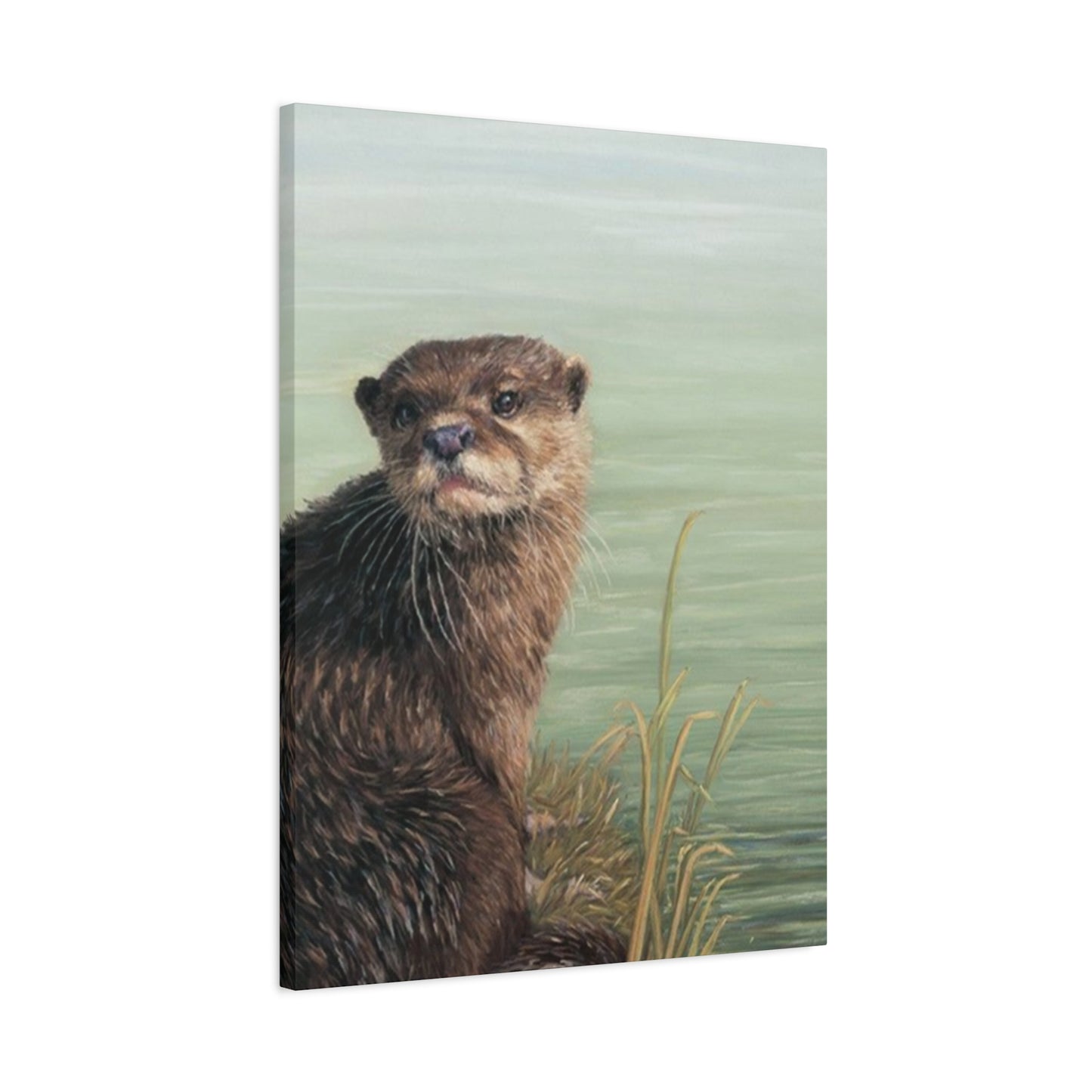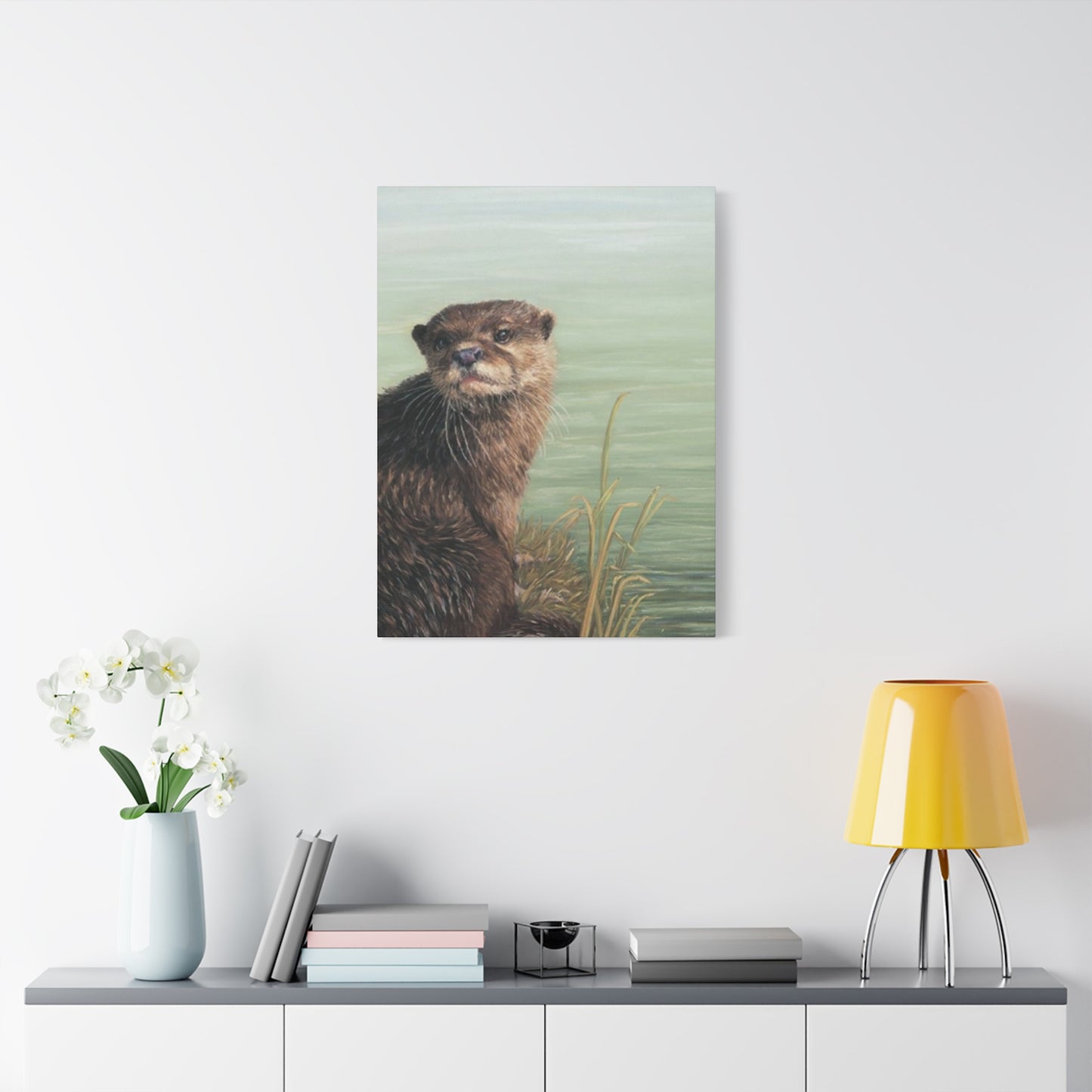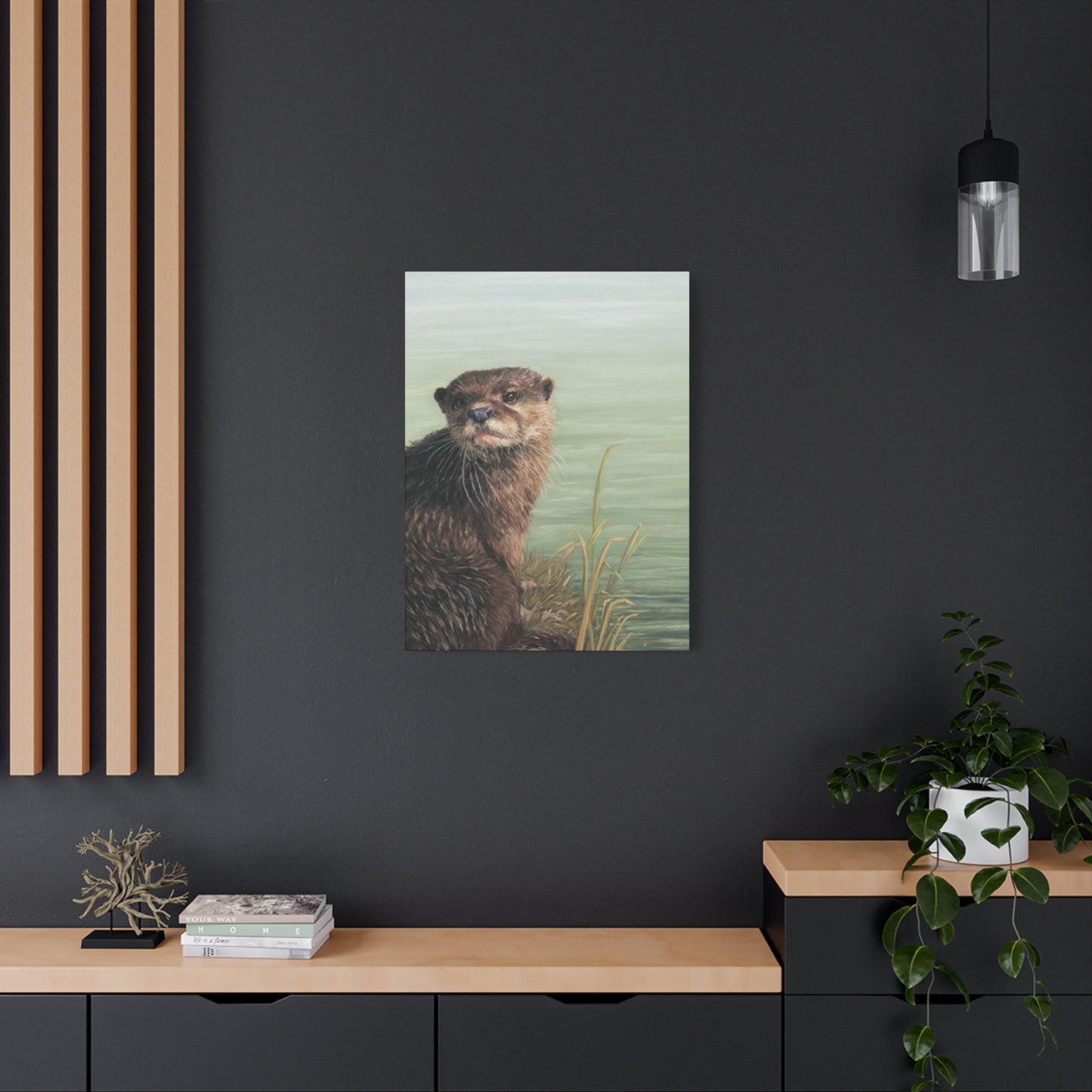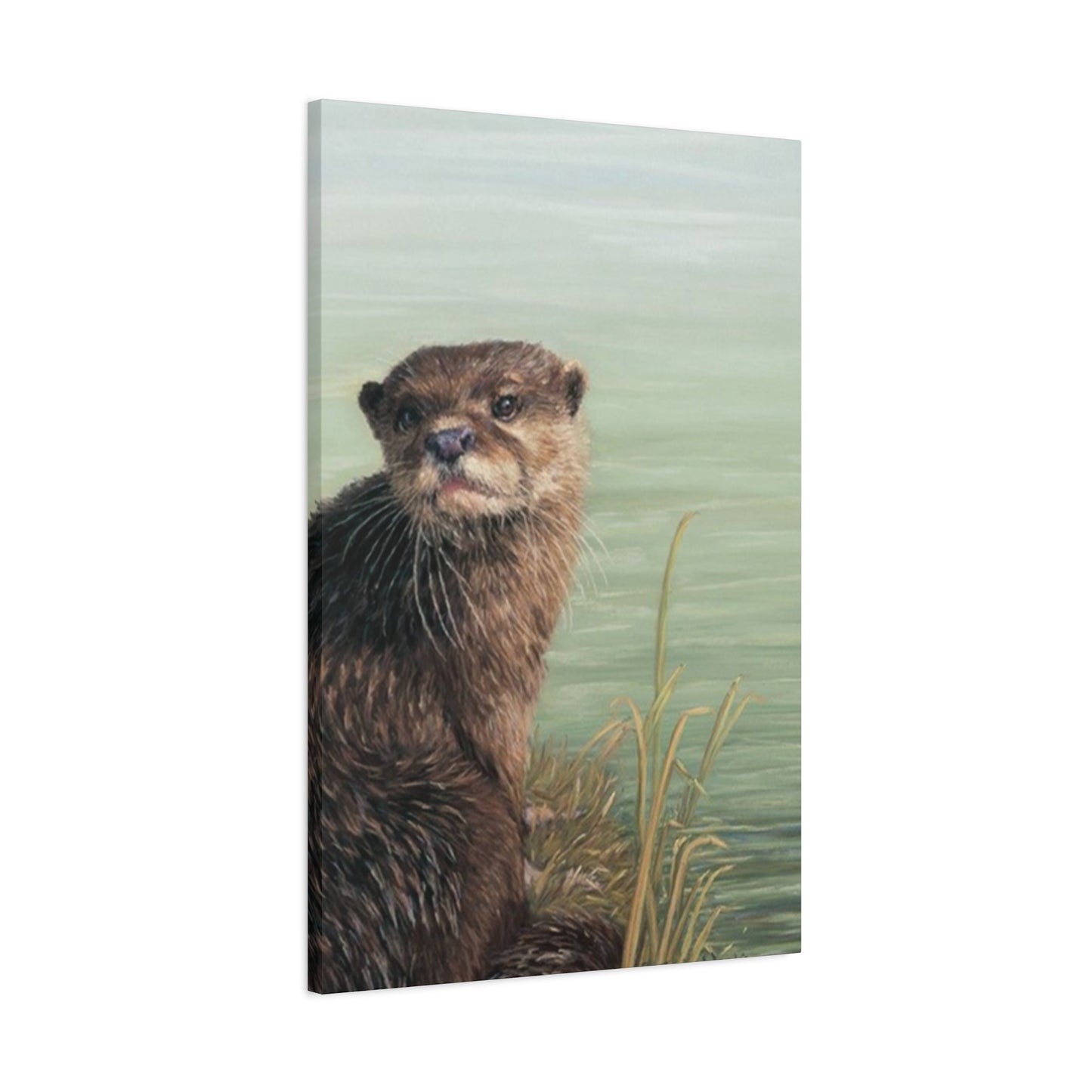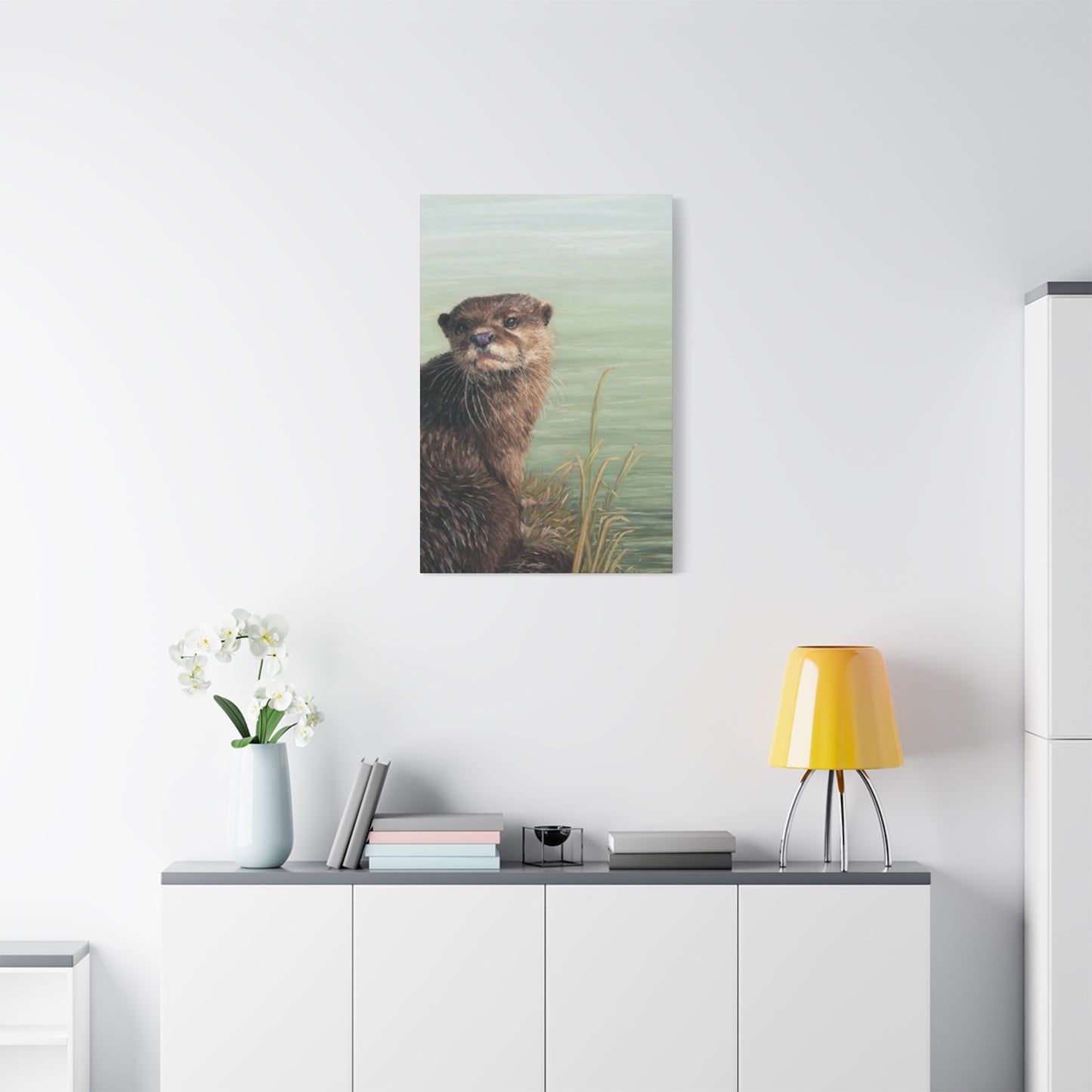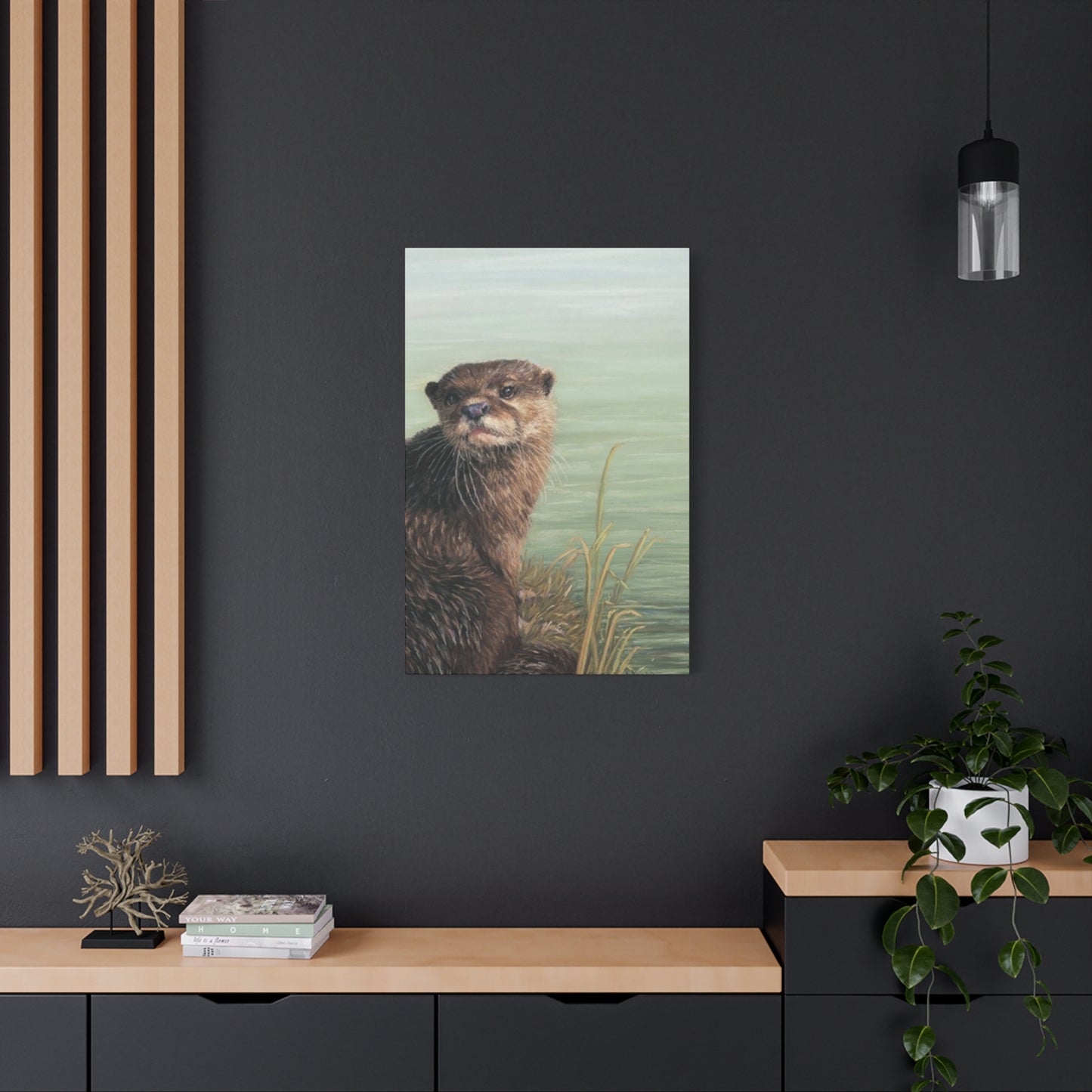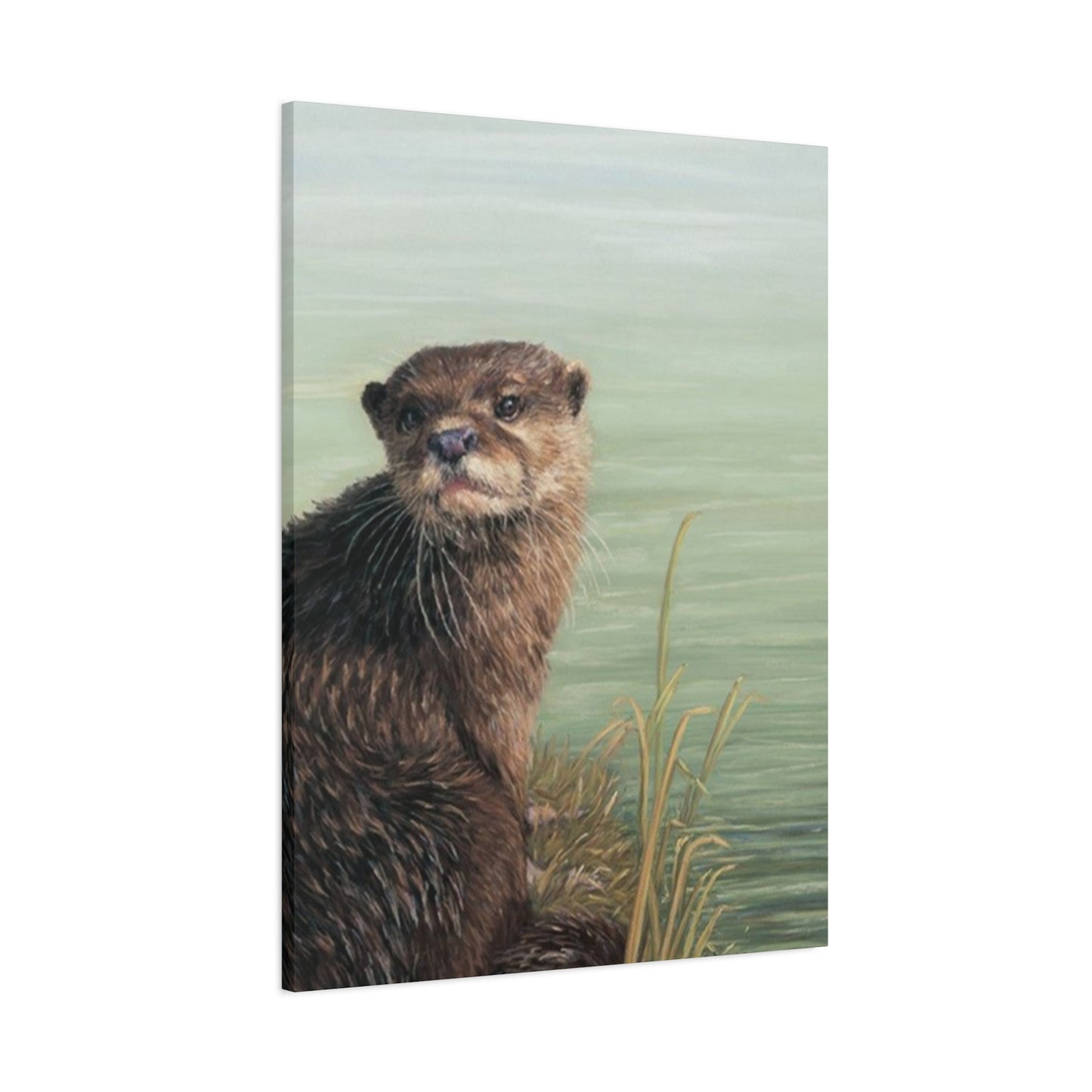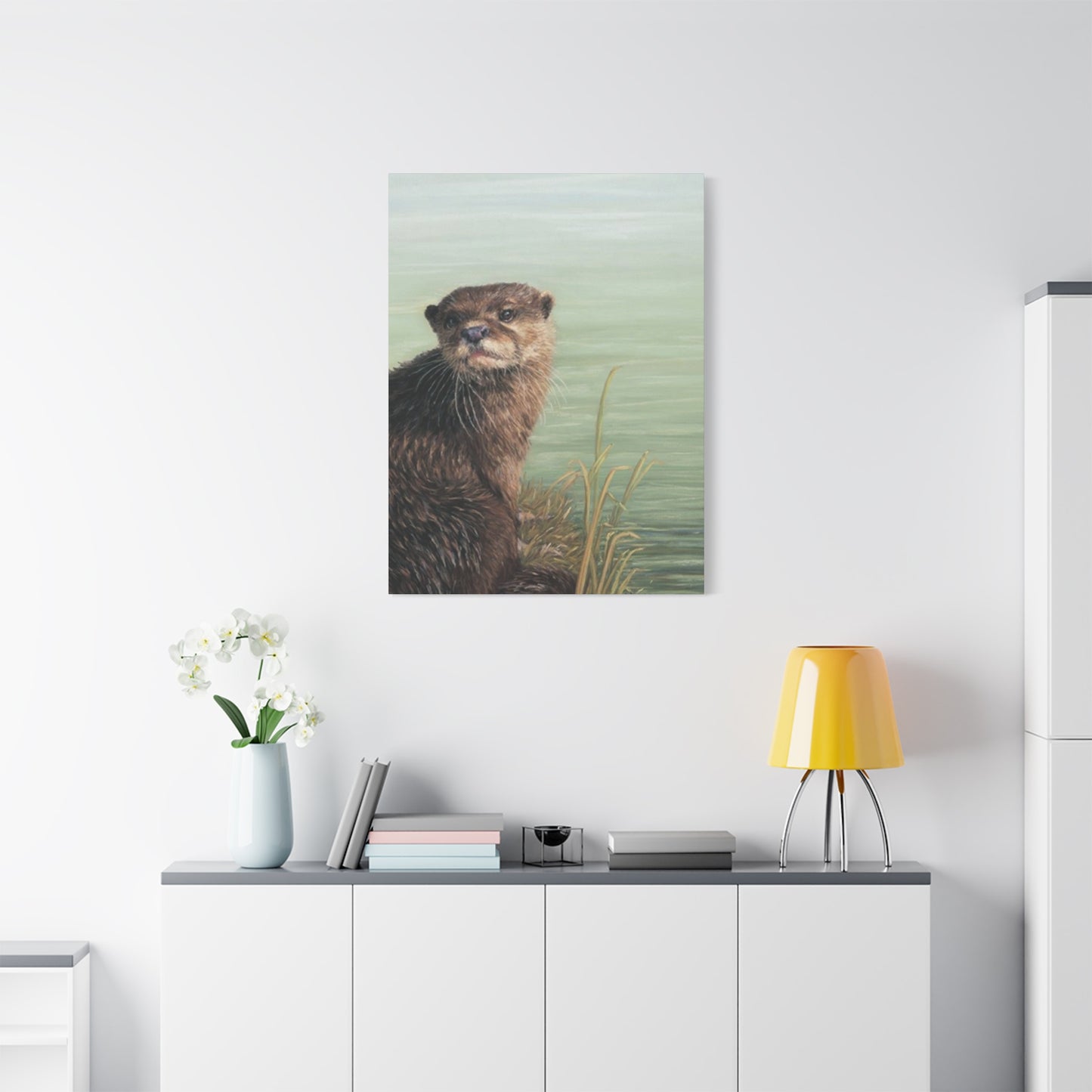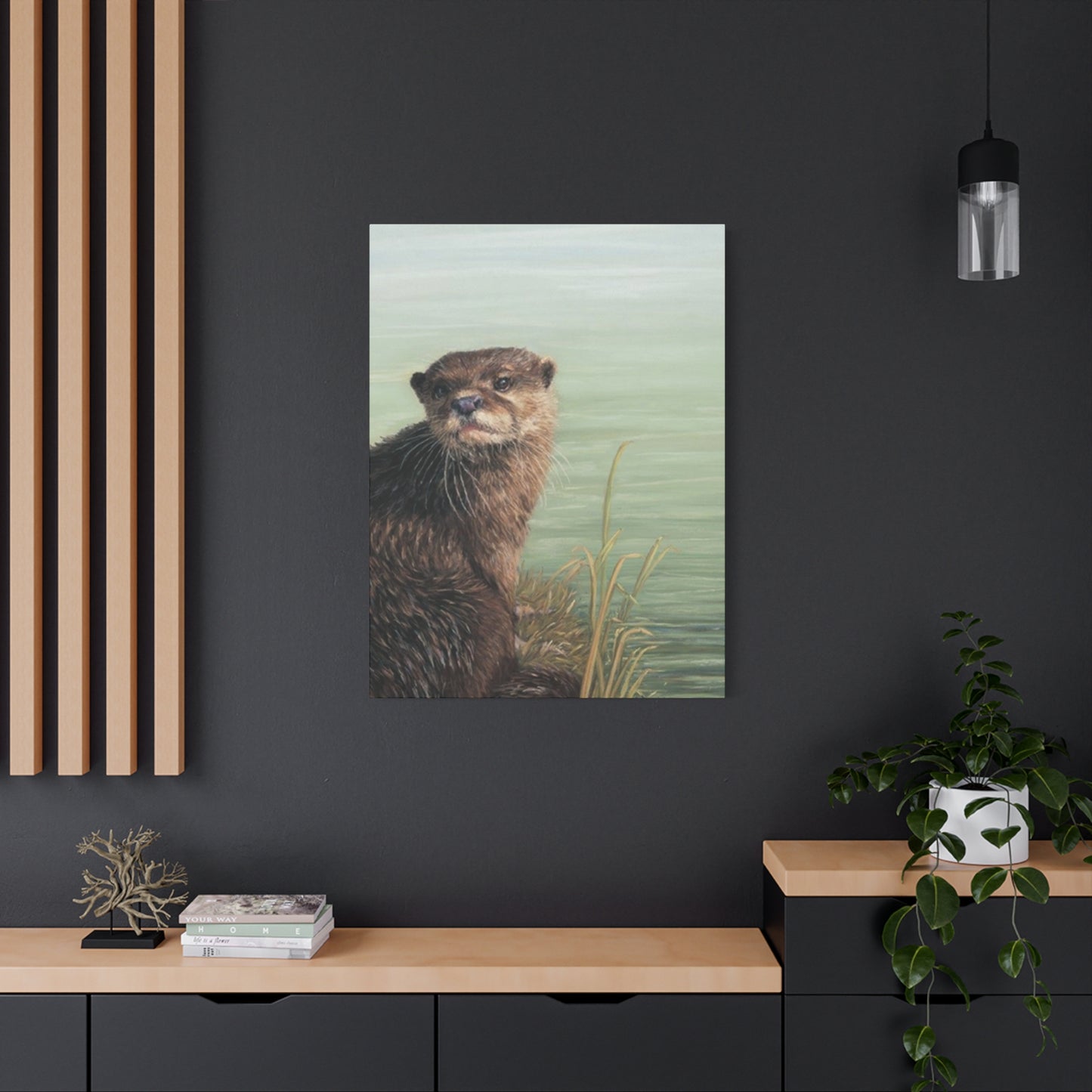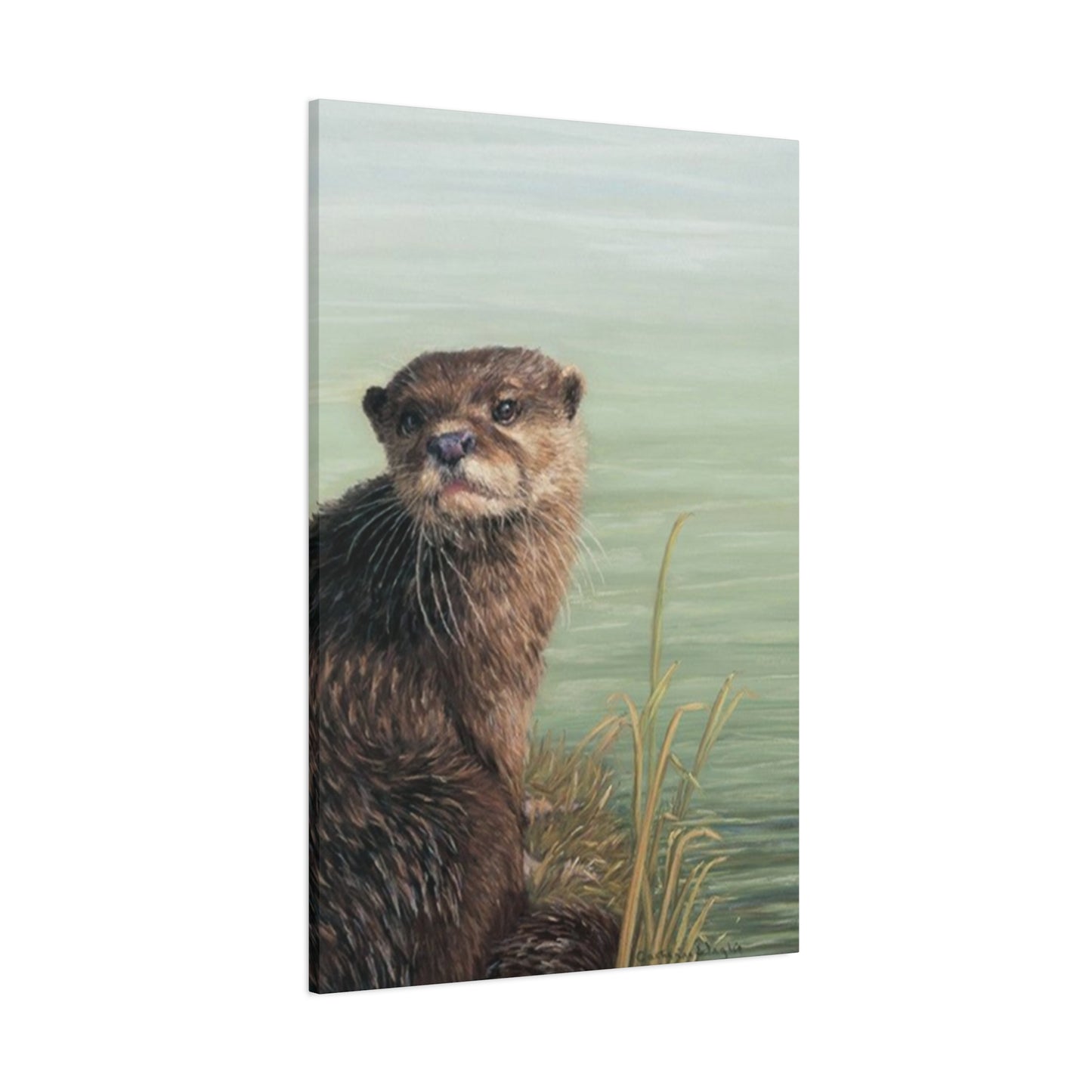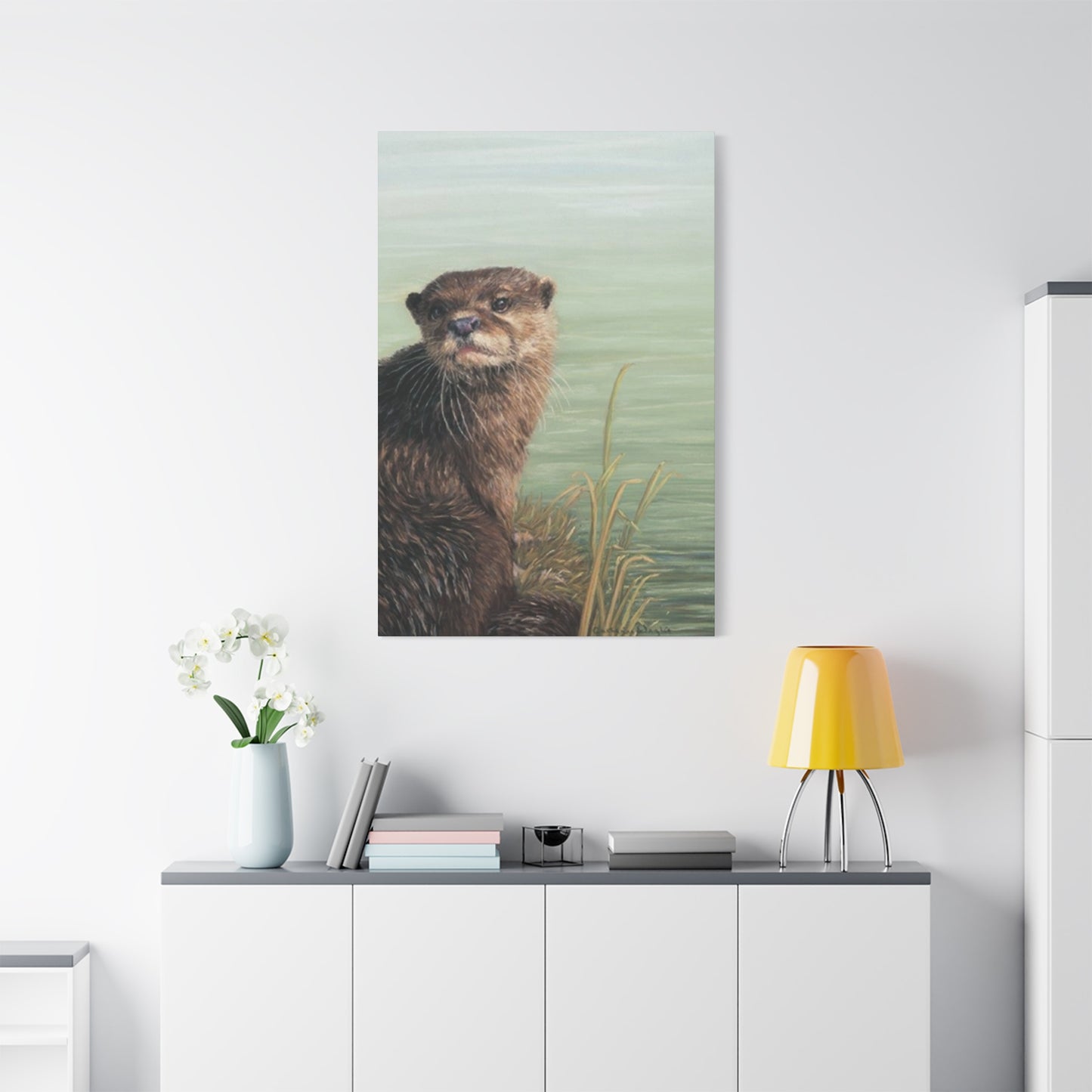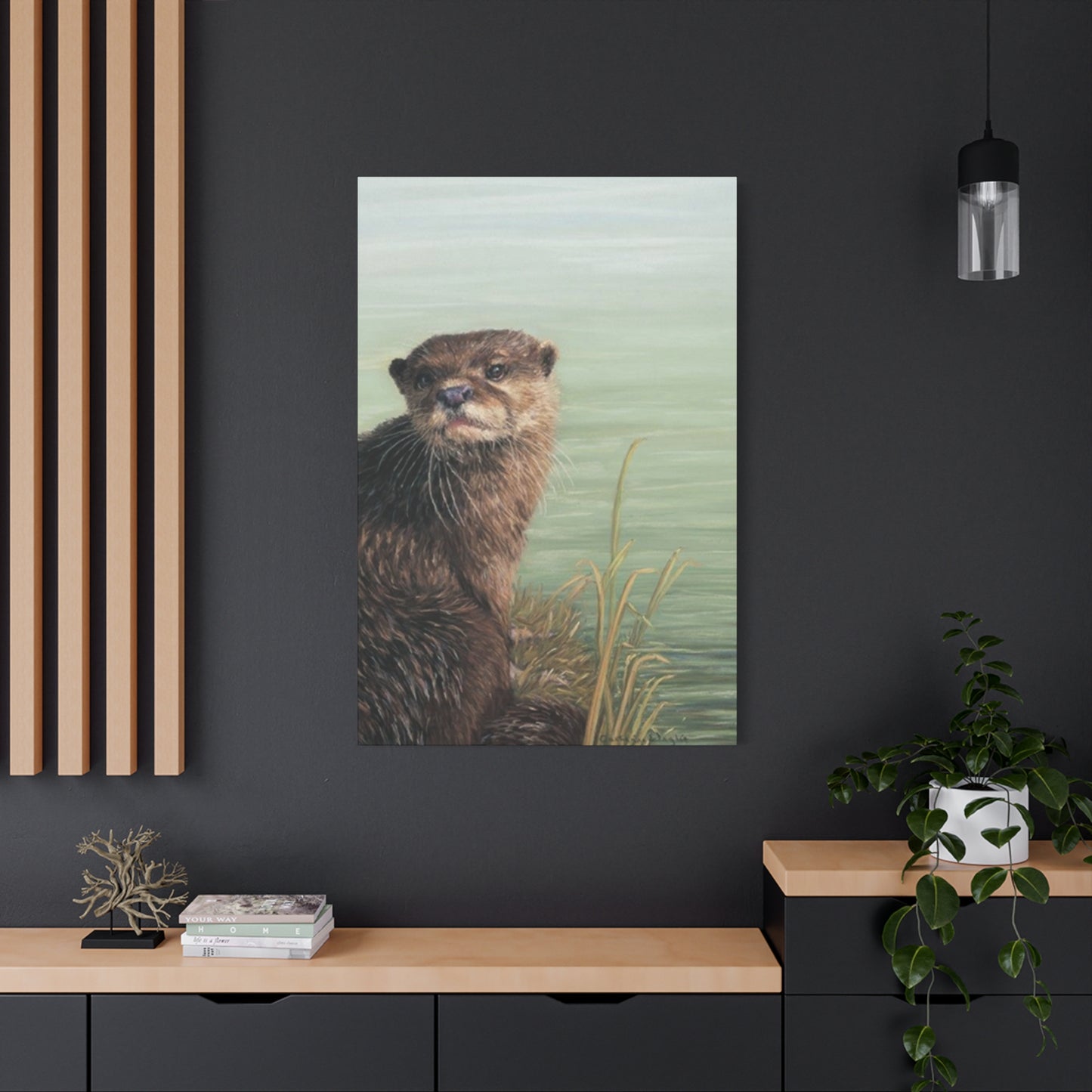Complete Guide to Adorable Otter Wall Art: Transform Your Home with Charming Aquatic Decor
The captivating world of otter-themed artwork has taken the home decoration industry by storm, offering homeowners a delightful way to bring aquatic charm and whimsical character into their living environments. These adorable creatures, known for their playful nature and endearing expressions, translate beautifully into artistic representations that can transform any room from ordinary to extraordinary. The growing popularity of otter-themed decorative pieces stems from their unique ability to evoke feelings of joy, tranquility, and connection with nature.
Otters possess an inherent charm that resonates with people of all ages. Their sleek bodies, expressive eyes, and playful demeanor create an instant emotional connection when depicted in artwork. Whether portrayed floating peacefully on their backs, playing with their young, or engaging in their characteristic grooming behaviors, these aquatic mammals bring a sense of serenity and happiness to any living environment. The versatility of otter imagery allows for countless artistic interpretations, from realistic wildlife portraits to whimsical cartoon-style illustrations.
The psychological impact of incorporating otter-themed artwork into home decoration cannot be understated. These creatures symbolize playfulness, family bonds, and adaptability, qualities that many homeowners wish to cultivate in their personal environments. The presence of otter imagery can serve as a daily reminder to embrace joy, maintain strong relationships, and approach life's challenges with grace and flexibility. This emotional resonance makes otter-themed decorative pieces particularly appealing to families, nature enthusiasts, and anyone seeking to create a more positive living atmosphere.
From a design perspective, otter artwork offers remarkable flexibility in terms of color palettes, artistic styles, and compositional approaches. The natural habitat of otters provides rich inspiration for complementary color schemes, including various shades of blue, green, and brown that can seamlessly integrate with existing home decor. Whether rendered in watercolors, oil paintings, digital illustrations, or photographic prints, otter imagery can adapt to virtually any decorative theme or personal aesthetic preference.
The educational value of otter-themed artwork also contributes to its appeal, particularly in family homes with children. These decorative pieces can serve as conversation starters about marine biology, conservation efforts, and the importance of protecting aquatic ecosystems. By incorporating otter imagery into their homes, families can foster a deeper appreciation for wildlife and environmental stewardship while simultaneously creating a visually appealing living environment.
Popular Design Approaches for Otter-Themed Artwork
The world of otter-themed decorative art encompasses a diverse range of stylistic approaches, each offering unique aesthetic qualities and emotional resonances. Contemporary artists and manufacturers have embraced various techniques and mediums to capture the essence of these beloved aquatic creatures, resulting in an extensive selection of options for homeowners seeking to incorporate otter imagery into their living environments.
Watercolor representations of otters have gained significant popularity due to their soft, flowing qualities that mirror the aquatic nature of these animals. These pieces often feature gentle color transitions and organic shapes that create a sense of movement and fluidity. The translucent properties of watercolor paint allow artists to capture the wet, glistening appearance of otter fur and the rippling effects of water, creating artwork that feels both realistic and dreamlike. Many watercolor otter pieces incorporate abstract backgrounds that suggest aquatic environments without overwhelming the central subject.
Photorealistic artwork represents another popular category, appealing to viewers who appreciate detailed, accurate depictions of wildlife. These pieces often showcase the intricate textures of otter fur, the clarity of their expressive eyes, and the natural behaviors that make these creatures so endearing. High-quality photographic prints and detailed paintings in this style can serve as focal points in rooms where homeowners want to celebrate the natural beauty of wildlife while maintaining a sophisticated decorative approach.
Contemporary digital art has opened new possibilities for otter-themed decorative pieces, allowing artists to experiment with vibrant colors, stylized forms, and imaginative compositions that might not be possible with traditional mediums. Digital illustrations can range from minimalist geometric representations to elaborate fantasy scenes featuring otters in magical underwater kingdoms. This versatility makes digital otter art particularly appealing to younger demographics and homeowners who prefer modern, innovative decorative approaches.
The folk art tradition has also embraced otter imagery, resulting in charming pieces that emphasize simplicity, cultural storytelling, and handcrafted aesthetics. These works often feature bold colors, simplified forms, and decorative patterns that reflect various cultural traditions while celebrating the universal appeal of these aquatic creatures. Folk art otter pieces can add warmth and personality to homes while honoring traditional artistic techniques and cultural heritage.
Mixed media approaches combine multiple artistic techniques and materials to create unique, textured pieces that engage viewers on multiple sensory levels. These works might incorporate elements such as fabric, natural materials, metallic accents, or three-dimensional components that enhance the visual impact and tactile appeal of the artwork. Mixed media otter pieces often serve as conversation starters and can bridge the gap between traditional artwork and sculptural decoration.
Creating Delightful Aquatic Themes for Children's Bedrooms
Children's bedrooms provide the perfect canvas for incorporating playful otter-themed artwork that can stimulate imagination, promote learning, and create a comforting environment for rest and play. The natural appeal of otters to young minds makes them ideal subjects for decorative pieces that will grow with children and continue to bring joy throughout their developmental years.
When selecting otter artwork for children's bedrooms, consider pieces that tell stories or depict engaging scenarios. Illustrations showing otter families playing together, swimming through kelp forests, or interacting with other aquatic creatures can serve as inspiration for imaginative play and bedtime stories. These narrative elements help children develop emotional connections with the artwork while encouraging creative thinking and storytelling skills.
Educational otter artwork can serve dual purposes in children's bedrooms by providing visual appeal while introducing important concepts about marine biology, environmental conservation, and animal behavior. Pieces that accurately depict otter habitats, feeding behaviors, or life cycles can spark curiosity about the natural world and encourage children to ask questions about wildlife and ecosystems. This approach transforms bedroom decoration into an opportunity for ongoing learning and discovery.
The color psychology of otter-themed artwork in children's bedrooms deserves careful consideration. Soft blues and greens can promote relaxation and peaceful sleep, while brighter colors can energize play areas within the bedroom. Many otter-themed pieces naturally incorporate calming aquatic colors that are conducive to rest while maintaining enough visual interest to engage active young minds during waking hours.
Interactive elements can enhance the appeal of otter artwork in children's bedrooms. Consider pieces that incorporate textures children can touch, hidden details they can discover over time, or components that change appearance under different lighting conditions. These interactive features can help maintain children's interest in their bedroom decoration as they grow and develop new appreciations for artistic details.
The placement of otter artwork in children's bedrooms should consider both aesthetic impact and safety concerns. Pieces positioned at child height can be appreciated more fully, while artwork placed higher on walls remains visible but safe from accidental damage during active play. Consider creating gallery walls that combine multiple smaller otter pieces rather than relying on single large artworks that might overwhelm smaller bedroom environments.
Designing Whimsical Environments with Aquatic Creature Art
The incorporation of otter-themed artwork into home decoration opens endless possibilities for creating whimsical, imaginative environments that celebrate the joy and wonder of aquatic life. These decorative approaches can transform ordinary living areas into enchanting environments that inspire creativity, promote relaxation, and foster a deeper connection with the natural world.
Layered storytelling through artwork placement can create immersive environments that engage viewers on multiple levels. Consider arranging otter pieces to suggest narrative progressions, such as depicting the journey of an otter family through different aquatic environments or showing various stages of otter development from playful pups to mature adults. This approach encourages viewers to spend time discovering new details and connections between different pieces within the collection.
Seasonal rotation of otter-themed artwork can maintain freshness and interest in whimsical decorative schemes while reflecting the changing moods and activities associated with different times of year. Summer pieces might emphasize swimming and sun-basking behaviors, while winter artwork could focus on cozy family scenes or the unique adaptations that allow otters to thrive in colder conditions. This approach keeps the decorative environment dynamic and engaging throughout the year.
Complementary decorative elements can enhance the whimsical impact of otter artwork while creating cohesive thematic environments. Consider incorporating natural materials such as driftwood, smooth stones, or dried aquatic plants that echo the natural habitats where otters live. Lighting elements that suggest underwater environments or water-inspired textiles can further enhance the aquatic theme while maintaining comfort and functionality in living areas.
The scale and proportion of otter artwork within whimsical decorative schemes require careful consideration to achieve the desired impact without overwhelming the available area. Mixing various sizes of otter pieces can create visual rhythm and prevent monotony, while ensuring that no single piece dominates the overall composition. Consider how furniture placement and room traffic patterns will affect the visibility and appreciation of different artwork elements.
Color coordination in whimsical otter-themed environments should balance visual cohesion with the natural diversity found in aquatic ecosystems. While maintaining a general color palette inspired by water and natural habitats, allow for variations that reflect the rich diversity of aquatic life and seasonal changes in natural environments. This approach creates visual interest while maintaining the unified theme that makes whimsical decorative schemes successful.
Artistic Interpretations: Naturalistic versus Stylized Otter Depictions
The choice between realistic and cartoon-style otter artwork significantly impacts the overall aesthetic and emotional resonance of decorative schemes. Each approach offers distinct advantages and appeals to different preferences, age groups, and decorative objectives, making it important to understand the characteristics and applications of both styles.
Realistic otter artwork emphasizes accurate anatomical details, natural coloration, and authentic behavioral representations that celebrate the true beauty of these aquatic creatures. These pieces often showcase the intricate patterns of otter fur, the expressive quality of their eyes, and the graceful movements that characterize their aquatic lifestyle. Realistic artwork appeals to nature enthusiasts, wildlife conservationists, and homeowners who prefer sophisticated, educational decorative elements that honor the natural world.
The technical skill required to create convincing realistic otter artwork often results in pieces that command attention and respect as serious artistic achievements. These works can serve as focal points in adult living areas, professional environments, or educational settings where accuracy and authenticity are valued. Realistic otter pieces often incorporate detailed background elements that provide context about natural habitats and ecological relationships.
Stylized and cartoon-style otter artwork, by contrast, emphasizes emotional expression, simplified forms, and enhanced personality characteristics that make these creatures particularly appealing to children and adults who enjoy playful decorative elements. These artistic approaches often exaggerate endearing features such as large eyes, rounded bodies, and expressive facial features that emphasize the cute and cuddly aspects of otter appearance.
The flexibility of stylized otter artwork allows for creative interpretations that might not be possible with realistic approaches. Artists can experiment with unusual color combinations, fantastical environments, and exaggerated proportions that enhance the emotional impact of the artwork while maintaining recognizable otter characteristics. This creative freedom often results in unique, memorable pieces that serve as conversation starters and sources of joy.
Hybrid approaches that combine elements of both realistic and stylized techniques can offer the best of both worlds, creating artwork that maintains biological accuracy while incorporating enhanced emotional appeal. These pieces might feature anatomically correct otter forms rendered with slightly exaggerated features or realistic otters placed in imaginative, stylized environments that enhance their charm and personality.
The age appropriateness of different artistic styles should guide selection decisions, particularly in family homes with children of various ages. While very young children typically respond better to simplified, cartoon-style representations, older children and adults may appreciate more realistic depictions that offer educational value and sophisticated aesthetic appeal. Consider the primary users of different areas when selecting between realistic and stylized otter artwork.
Creative Projects for Handmade Otter Decorations
The satisfaction of creating personalized otter-themed artwork adds an extra layer of meaning and connection to home decoration while providing opportunities for creative expression and skill development. Handmade otter decorative pieces can be customized to perfectly match existing decor, reflect personal artistic preferences, and serve as meaningful gifts for fellow otter enthusiasts.
Painting projects offer accessible entry points for creating custom otter artwork, regardless of previous artistic experience. Simple acrylic painting techniques can produce charming otter silhouettes, while more advanced watercolor methods can capture the fluid, translucent qualities associated with aquatic environments. Consider starting with basic otter shapes and gradually adding details such as facial features, fur textures, and environmental elements as confidence and skills develop.
Canvas preparation and composition planning are crucial steps in successful otter painting projects. Sketch the basic composition lightly before applying paint, considering how the otter subjects will be positioned relative to background elements and the overall canvas format. Think about color harmony and how different elements within the composition will work together to create a cohesive, appealing final result.
Collage techniques provide alternative approaches for creating otter artwork that may be more accessible to individuals who feel intimidated by traditional painting methods. Magazine cutouts, colored papers, fabric scraps, and natural materials can be combined to create unique otter representations that emphasize texture and visual interest over precise anatomical accuracy. These techniques are particularly suitable for family art projects where multiple participants can contribute different elements.
Sculptural approaches to handmade otter decoration open possibilities for three-dimensional artwork that can serve functional purposes while maintaining decorative appeal. Clay modeling, wood carving, or fabric craft techniques can produce otter figures that work as bookends, garden decorations, or standalone sculptural pieces. These projects often require more specialized tools and techniques but can result in truly unique decorative elements.
Digital creation tools have democratized the production of custom otter artwork, allowing individuals with basic computer skills to create professional-looking pieces suitable for printing and display. Free and low-cost software programs provide templates, drawing tools, and special effects that can help beginners produce impressive results. Digital creation also allows for easy experimentation with different colors, compositions, and styles without the material costs associated with traditional art supplies.
Documentation and preservation of handmade otter artwork ensure that creative efforts continue to bring joy for years to come. Photograph completed pieces before installation, maintain records of materials and techniques used, and consider creating series or collections that can be displayed together for greater visual impact. This documentation can also serve as inspiration for future creative projects and help track the development of artistic skills over time.
Large-Scale Otter Murals for Maximum Visual Impact
The dramatic impact of large-scale otter murals can transform entire rooms or outdoor areas into immersive aquatic environments that celebrate the beauty and charm of these beloved creatures. Mural projects require careful planning and execution but offer unparalleled opportunities to create truly spectacular decorative statements that serve as permanent focal points within home environments.
Design planning for otter murals must consider the architectural characteristics of the intended surface, including wall dimensions, existing fixtures, and lighting conditions that will affect the final appearance of the artwork. Sketch preliminary designs at scale to ensure that otter subjects will be appropriately proportioned relative to the wall size and surrounding furnishings. Consider how viewers will typically approach and view the mural to optimize the composition for maximum impact.
The narrative possibilities of large-scale otter murals allow for complex storytelling that might not be feasible in smaller artwork formats. Consider depicting otter families in their natural habitats, showing seasonal changes in otter behavior, or creating fantasy underwater kingdoms where otters interact with other aquatic creatures. These narrative elements can engage viewers of all ages while providing ongoing visual interest that rewards repeated viewing.
Technical execution of otter murals requires consideration of appropriate materials, surface preparation, and painting techniques that will ensure durability and long-term visual appeal. High-quality acrylic paints formulated for wall application provide good coverage, color stability, and resistance to fading or damage. Proper surface preparation, including cleaning, priming, and addressing any existing wall imperfections, is crucial for professional-looking results.
Collaborative mural projects can serve as meaningful family or community activities that bring people together while creating lasting decorative improvements. Assign different sections or elements to various participants based on their skill levels and interests, ensuring that everyone can contribute meaningfully to the final result. These collaborative efforts often produce unique, personalized murals that reflect the diverse perspectives and creativity of all contributors.
Maintenance and protection of otter murals ensure that these significant artistic investments continue to provide enjoyment for years to come. Consider applying protective clear coats in high-traffic areas, address any damage promptly to prevent deterioration, and plan for periodic cleaning using appropriate methods that won't damage the artwork. Document the mural creation process and final result to preserve the memory of this significant decorative project.
Location considerations for otter murals should balance visual impact with practical concerns such as lighting, humidity, and potential damage from furniture or daily activities. Exterior murals require weather-resistant materials and techniques, while interior murals must consider factors such as heating, cooling, and potential wall settling that might affect the artwork over time.
Shopping Guide for Premium Otter Decorative Art
The marketplace for otter-themed decorative art has expanded significantly in recent years, offering consumers an impressive array of options across various price points, artistic styles, and quality levels. Understanding how to navigate this diverse market ensures that investment in otter artwork results in pieces that provide lasting satisfaction and decorative value.
Online marketplaces have revolutionized access to otter artwork, connecting buyers with artists and retailers from around the world. These platforms often feature extensive search and filtering options that allow shoppers to specify preferences for size, color, style, and price range. Customer reviews and ratings provide valuable insights into product quality and seller reliability, while detailed product descriptions and multiple photographs help buyers make informed decisions.
Independent artists and craftspeople often offer the most unique and personalized otter artwork options, creating one-of-a-kind pieces that cannot be found through mass-market retailers. Many artists maintain online portfolios and accept custom commissions, allowing buyers to collaborate on pieces that perfectly match their specific decorative needs and personal preferences. Building relationships with individual artists can lead to ongoing access to new works and exclusive opportunities.
Gallery representation provides another avenue for acquiring high-quality otter artwork, particularly for buyers seeking museum-quality pieces or investment-grade art. Galleries often specialize in particular artistic styles or mediums, making it easier to find pieces that align with specific aesthetic preferences. Gallery professionals can provide expert advice about artistic merit, conservation concerns, and long-term value considerations.
Print-on-demand services have made high-quality otter artwork more accessible by allowing artists to offer their designs as affordable prints without the overhead costs associated with maintaining physical inventory. These services often provide multiple format options, from small prints suitable for groupings to large-scale pieces that can serve as room focal points. Quality varies significantly among print-on-demand providers, making research and sample ordering advisable before making significant purchases.
Seasonal and promotional opportunities can provide access to premium otter artwork at reduced prices, particularly during holiday seasons or special events. Many artists and retailers offer discounts for bulk purchases, repeat customers, or first-time buyers. Subscribing to newsletters and following social media accounts of favorite artists and retailers can provide advance notice of special offers and new product releases.
Quality assessment techniques help buyers distinguish between different levels of craftsmanship and materials used in otter artwork production. Consider factors such as color accuracy and saturation, print resolution and clarity, paper or canvas quality, and overall construction standards. Request detailed information about materials, production methods, and expected longevity when making significant purchases.
Incorporating Otter Imagery in Nature-Inspired Room Designs
The natural affinity between otter imagery and nature-themed decorative schemes creates opportunities for cohesive, harmonious room designs that celebrate the beauty of the natural world while maintaining comfortable, functional living environments. These integrated approaches can transform ordinary rooms into serene retreats that promote relaxation and connection with natural rhythms.
Color palette development for nature-inspired rooms featuring otter artwork should draw inspiration from the diverse hues found in aquatic ecosystems. Rich blues and greens form the foundation of these schemes, complemented by earth tones that reflect riverbanks, coastal areas, and forest environments where otters make their homes. Neutral tones such as warm grays and soft browns provide grounding elements that prevent color schemes from becoming overwhelming while maintaining natural authenticity.
Natural material incorporation enhances the authentic feel of nature-inspired rooms while providing textural interest that complements otter artwork. Consider including elements such as reclaimed wood furniture, stone accents, woven natural fiber textiles, and plants that thrive in humid conditions reminiscent of otter habitats. These materials create sensory richness that extends the nature theme beyond purely visual elements.
Lighting design in nature-inspired rooms should mimic the quality and patterns of natural illumination found in outdoor environments. Soft, diffused lighting suggests the filtered light found underwater or beneath forest canopies, while directional lighting can highlight specific otter artwork pieces or natural material features. Consider incorporating fixtures that suggest natural forms or materials to maintain thematic consistency.
Seasonal adaptation allows nature-inspired rooms to reflect the changing conditions and moods associated with different times of year. Otter artwork can be rotated or supplemented with seasonal accessories that celebrate the varying activities and environments these creatures experience throughout the annual cycle. This approach keeps rooms feeling fresh and connected to natural rhythms while maintaining core design elements.
Furniture selection for nature-inspired rooms should emphasize organic forms, natural materials, and comfortable proportions that encourage relaxation and contemplation. Avoid overly geometric or industrial pieces that might conflict with the natural theme, instead favoring items that suggest the flowing forms and comfortable functionality found in natural environments. Consider custom pieces that incorporate driftwood or other natural materials that directly connect to aquatic themes.
Acoustic considerations in nature-inspired rooms can enhance the immersive quality of these environments through the incorporation of gentle water sounds, nature recordings, or sound-absorbing materials that create peaceful, quiet atmospheres. These auditory elements complement otter artwork by engaging additional senses and creating more complete nature-inspired experiences.
Harmonizing Otter Art with Aquatic Design Elements
The integration of otter artwork with broader aquatic design themes creates opportunities for sophisticated, cohesive decorative schemes that celebrate the beauty and tranquility of water-based environments. These coordinated approaches can transform rooms into serene aquatic sanctuaries while maintaining practical functionality for daily living.
Water feature incorporation provides literal aquatic elements that complement otter artwork while contributing soothing sounds and visual movement to room environments. Small fountains, aquariums, or decorative water vessels can echo the natural habitats where otters thrive while providing focal points that work in harmony with artwork placements. Consider the maintenance requirements and spatial needs of water features when planning these integrations.
Textile selection for aquatic-themed rooms should emphasize materials and patterns that suggest water movement, aquatic textures, or marine environments. Flowing curtains, rippled fabric patterns, and materials with subtle shimmer or translucent qualities can enhance the aquatic atmosphere while providing necessary functionality for window treatments, upholstery, and accent pieces. Avoid heavy, rigid materials that might conflict with the fluid nature of aquatic themes.
Glass and crystal elements can enhance aquatic themes by suggesting the clarity and reflective qualities of water while providing opportunities for interesting light play throughout room environments. Consider incorporating glass sculptures, crystal decorative objects, or mirrored surfaces that multiply and reflect both natural and artificial light sources. These elements can create sparkle and movement that suggests underwater light patterns.
Plant selection for aquatic-themed rooms should emphasize species that naturally occur in or near water environments, creating authentic connections to the habitats where otters live. Ferns, water lilies, and other moisture-loving plants can thrive in bathroom environments, while air plants and moss arrangements can bring aquatic authenticity to other room types. Consider both living and high-quality artificial plants based on maintenance preferences and growing conditions.
Flooring materials in aquatic-themed rooms should suggest the smooth, flowing surfaces found in natural water environments while maintaining practical considerations for daily use. Natural stone, polished concrete, or high-quality ceramic tiles can provide appropriate aesthetic qualities while offering durability and easy maintenance. Area rugs with wave patterns or aquatic colors can soften hard surfaces while reinforcing thematic elements.
Architectural details such as curved walls, arched openings, or flowing built-in elements can enhance aquatic themes by suggesting the organic forms found in underwater caves or coastal rock formations. While major architectural modifications may not be practical for most homeowners, smaller details such as curved furniture pieces or undulating decorative moldings can contribute to the overall aquatic atmosphere.
Cultural and Symbolic Significance of Otters in Artistic Expression
Throughout human history, otters have captured the imagination of artists and storytellers across diverse cultures, resulting in rich symbolic traditions that add depth and meaning to contemporary otter artwork. Understanding these cultural connections can enhance appreciation for otter-themed decorative pieces while providing insight into the universal appeal of these remarkable aquatic creatures.
Many indigenous cultures of the Pacific Northwest have long regarded otters as powerful spiritual symbols representing family bonds, playfulness, and the importance of community cooperation. These cultural traditions often depict otters as wise teachers who demonstrate the value of joy, laughter, and mutual support within family groups. Contemporary otter artwork that draws inspiration from these traditions can bring deeper meaning to home decoration while honoring indigenous wisdom and artistic heritage.
Celtic mythology includes numerous references to otters as mystical creatures associated with healing, transformation, and the bridging of different worlds. In these traditions, otters were believed to possess special knowledge about water magic and the hidden mysteries of aquatic realms. Modern otter artwork that incorporates Celtic design elements or symbolic references can tap into these rich mythological associations while creating visually striking decorative pieces.
Asian artistic traditions have celebrated otters as symbols of good fortune, perseverance, and successful adaptation to challenging circumstances. Japanese and Chinese art forms often depict otters in harmonious natural settings that emphasize their intelligence and social nature. Contemporary interpretations of these traditional approaches can bring cultural richness to otter artwork while maintaining authentic connections to established artistic conventions.
Environmental symbolism in contemporary otter artwork often emphasizes conservation themes and the importance of protecting aquatic ecosystems for future generations. These pieces serve as reminders of human responsibility toward wildlife preservation while celebrating the natural beauty that makes conservation efforts worthwhile. Artwork that incorporates environmental messages can educate viewers while providing aesthetic enjoyment and decorative value.
Psychological symbolism associated with otters often focuses on their demonstrated abilities to find joy in simple activities, maintain strong family relationships, and adapt gracefully to changing circumstances. These qualities make otter imagery particularly appealing to individuals seeking to cultivate similar characteristics in their own lives. Decorative pieces that emphasize these symbolic aspects can serve as daily reminders of important life values and personal aspirations.
The evolution of otter symbolism in contemporary culture reflects changing attitudes toward wildlife, environmental responsibility, and the importance of maintaining connections with the natural world despite increasingly urbanized lifestyles. Modern otter artwork often bridges traditional symbolic meanings with current concerns about sustainability and ecological awareness, creating pieces that resonate with contemporary values while honoring historical artistic traditions.
Professional Presentation Techniques for Otter Artwork
The proper framing and presentation of otter artwork significantly impacts its visual appeal, longevity, and overall contribution to home decoration schemes. Understanding professional presentation techniques ensures that investment in otter artwork results in displays that enhance both the individual pieces and the broader decorative environment.
Frame selection should complement both the artistic style of otter pieces and the broader decorative scheme of the room where they will be displayed. Traditional wildlife artwork often benefits from natural wood frames that echo the organic environments where otters live, while contemporary stylized pieces might work better with sleek metal or minimalist frames that allow the artwork to take center stage. Consider how frame colors and materials will interact with existing furniture and architectural elements.
Matting decisions can significantly impact the presentation of otter artwork, particularly for prints and photographs that benefit from protective spacing between the artwork surface and frame glass. Neutral mat colors typically work well with nature-themed artwork, while colored mats can be used to pick up specific hues within the otter pieces or coordinate with room color schemes. Consider conservation-quality matting materials for valuable pieces to ensure long-term preservation.
Sizing proportions between otter artwork and their frames require careful consideration to achieve balanced, professional presentations. Oversized frames can overwhelm delicate artwork, while frames that are too small may fail to provide adequate visual weight for larger pieces. Consider the viewing distance and surrounding elements when determining appropriate frame proportions for different otter artwork installations.
Glass selection for framed otter artwork should balance protection requirements with visual clarity and reflection concerns. Standard glass provides adequate protection for most pieces, while UV-filtering glass offers additional protection against fading for valuable or irreplaceable works. Anti-reflective glass can improve viewing quality in brightly lit rooms but comes at higher cost and may not be necessary for all installations.
Grouping strategies for multiple otter pieces can create gallery wall displays that have greater visual impact than individual pieces displayed in isolation. Consider themes such as different life stages, seasonal variations, or artistic style progressions when planning grouped displays. Maintain consistent spacing between pieces and ensure that the overall composition has visual balance and flow that guides viewer attention effectively.
Conservation considerations for valuable otter artwork include factors such as humidity control, temperature stability, and protection from direct sunlight that can cause fading or deterioration over time. Consider the environmental conditions in different rooms when planning artwork placement, and be prepared to make adjustments if conditions prove problematic for long-term artwork preservation.
Aquatic Themes for Bathroom Decoration with Otter Art
Bathrooms provide ideal environments for otter-themed artwork due to their natural association with water and the intimate, personal nature of these functional areas. The incorporation of otter imagery in bathroom decoration can transform utilitarian rooms into delightful aquatic retreats that make daily routines more enjoyable while celebrating the charm of these beloved aquatic creatures.
Humidity considerations in bathroom environments require careful selection of otter artwork materials and protective measures that ensure longevity despite challenging environmental conditions. Consider waterproof or water-resistant artwork options, protective frame treatments, or strategic placement away from direct moisture exposure. High-quality prints with protective coatings or sealed frames can withstand bathroom humidity while maintaining visual appeal for years of enjoyment.
Scale appropriateness for bathroom otter artwork should consider the typically smaller dimensions of these rooms while ensuring that pieces remain visible and impactful despite potential visual competition from fixtures, mirrors, and necessary functional elements. Smaller, carefully chosen pieces often work better than large artwork that might overwhelm compact bathroom environments, while series or collections can provide visual interest without requiring excessive wall area.
Color coordination in bathroom otter displays should complement existing fixture colors, tile selections, and overall bathroom color schemes while maintaining the authentic aquatic colors associated with otter habitats. Cool blues and greens work particularly well in bathroom environments, while warm accents can prevent color schemes from feeling cold or sterile. Consider how lighting conditions in bathrooms will affect color appearance throughout different times of day.
Placement strategies for bathroom otter artwork should consider privacy needs, moisture exposure risks, and sight lines from different positions within the room. Artwork positioned opposite mirrors can create interesting reflections that multiply visual impact, while pieces placed near bathtubs can be enjoyed during relaxing soaks. Avoid placement directly above bathtubs or showers where moisture exposure might cause damage over time.
Thematic integration with bathroom accessories can create cohesive aquatic environments that celebrate otter themes throughout all decorative elements. Consider shower curtains with aquatic patterns, towels in colors that complement otter artwork, or decorative accessories that echo aquatic themes without overwhelming the primary artwork displays. These coordinated approaches create immersive environments that feel intentional and well-designed.
Safety considerations in bathroom otter artwork installation include secure mounting methods that can withstand humidity effects on wall materials and proper electrical considerations for any lighting elements that highlight the artwork. Ensure that all mounting hardware is appropriate for bathroom use and consider the weight of framed pieces when selecting mounting methods for potentially compromised wall surfaces.
Enhancing Rooms with Vibrant Otter-Themed Color Schemes
The strategic use of color in otter-themed decorative schemes can dramatically impact the mood, energy level, and overall aesthetic appeal of room environments. Understanding color psychology and the natural color associations of otter habitats enables homeowners to create vibrant, engaging environments that celebrate these beloved creatures while maintaining comfortable, livable conditions.
Primary color development for otter-themed rooms should draw inspiration from the rich diversity of hues found in aquatic ecosystems where otters thrive. Deep ocean blues provide dramatic backdrops that suggest the depths where otters dive for food, while lighter aqua tones can create more ethereal, peaceful atmospheres reminiscent of shallow coastal waters. Consider how different blue variations will interact with existing architectural elements and furniture pieces.
Green color integration reflects the lush vegetation found along riverbanks and coastal areas where otters make their homes. Forest greens can provide grounding elements that prevent blue-heavy color schemes from feeling cold, while brighter lime or emerald greens can add energy and freshness to room environments. Consider incorporating various green tones through plant life, textiles, or accent pieces that complement otter artwork displays.
Earth tone grounding prevents vibrant aquatic colors from overwhelming room environments while providing authentic connections to the terrestrial aspects of otter habitats. Warm browns reflect riverbank soils and rocky coastal areas, while sandy beiges suggest beach environments where sea otters often rest and play. These neutral tones provide visual breathing room and help vibrant colors maintain their impact without becoming fatiguing.
Accent color strategies can introduce unexpected elements that prevent otter-themed color schemes from becoming predictable or monotonous. Consider the seasonal changes that occur in otter habitats, from the brilliant oranges and reds of autumn foliage reflected in river waters to the fresh yellows and light greens of spring vegetation. These accent colors can be introduced through artwork, accessories, or seasonal decorative elements.
Color temperature balance ensures that otter-themed color schemes remain comfortable and inviting rather than feeling cold or stark. While aquatic colors tend toward the cool end of the spectrum, introducing warm undertones through lighting, wood finishes, or warm accent colors can create more welcoming environments that feel balanced and harmonious. Consider how different lighting conditions throughout the day will affect color appearance and emotional impact.
Personal preference accommodation allows individual tastes and lifestyle needs to influence otter-themed color development without compromising thematic integrity. Some homeowners may prefer subtle, understated approaches that hint at aquatic themes through carefully chosen accent colors, while others might embrace bold, dramatic color statements that celebrate the vibrancy of underwater environments. Tailor color intensity and saturation levels to match personal comfort and style preferences.
Sophisticated Monochrome Otter Art for Contemporary Homes
Black and white otter artwork offers sophisticated alternatives to colorful aquatic themes while maintaining the emotional appeal and natural beauty associated with these beloved creatures. Monochrome presentations can create dramatic focal points in contemporary home environments while demonstrating the artistic merit of otter imagery beyond purely decorative applications.
Photographic black and white otter artwork emphasizes the natural beauty and expressive qualities of these creatures without the potential distractions of color variations. High-contrast black and white photography can create striking images that highlight the texture of otter fur, the clarity of their expressive eyes, and the graceful forms that make these animals so photogenic. These pieces often work well in sophisticated adult living areas or professional environments where dramatic visual impact is desired.
Artistic interpretation in monochrome otter pieces allows for creative exploration of form, texture, and composition without the complexities introduced by color considerations. Artists can focus on elements such as line quality, shading techniques, and compositional balance to create compelling pieces that demonstrate technical skill while celebrating otter subjects. These works often appeal to viewers who appreciate fine art craftsmanship and artistic technique.
Contemporary integration of black and white otter artwork into modern home decoration requires consideration of existing color schemes, architectural elements, and furniture selections. Monochrome pieces can provide visual anchors in rooms with bold color schemes, while also working effectively in minimalist environments where simplicity and sophistication are primary design goals. Consider how black and white artwork will interact with other decorative elements to ensure harmonious overall compositions.
Framing strategies for black and white otter artwork can emphasize the dramatic qualities of monochrome presentations through careful selection of frame styles, colors, and proportional relationships. Simple black frames can create bold, graphic presentations,

















